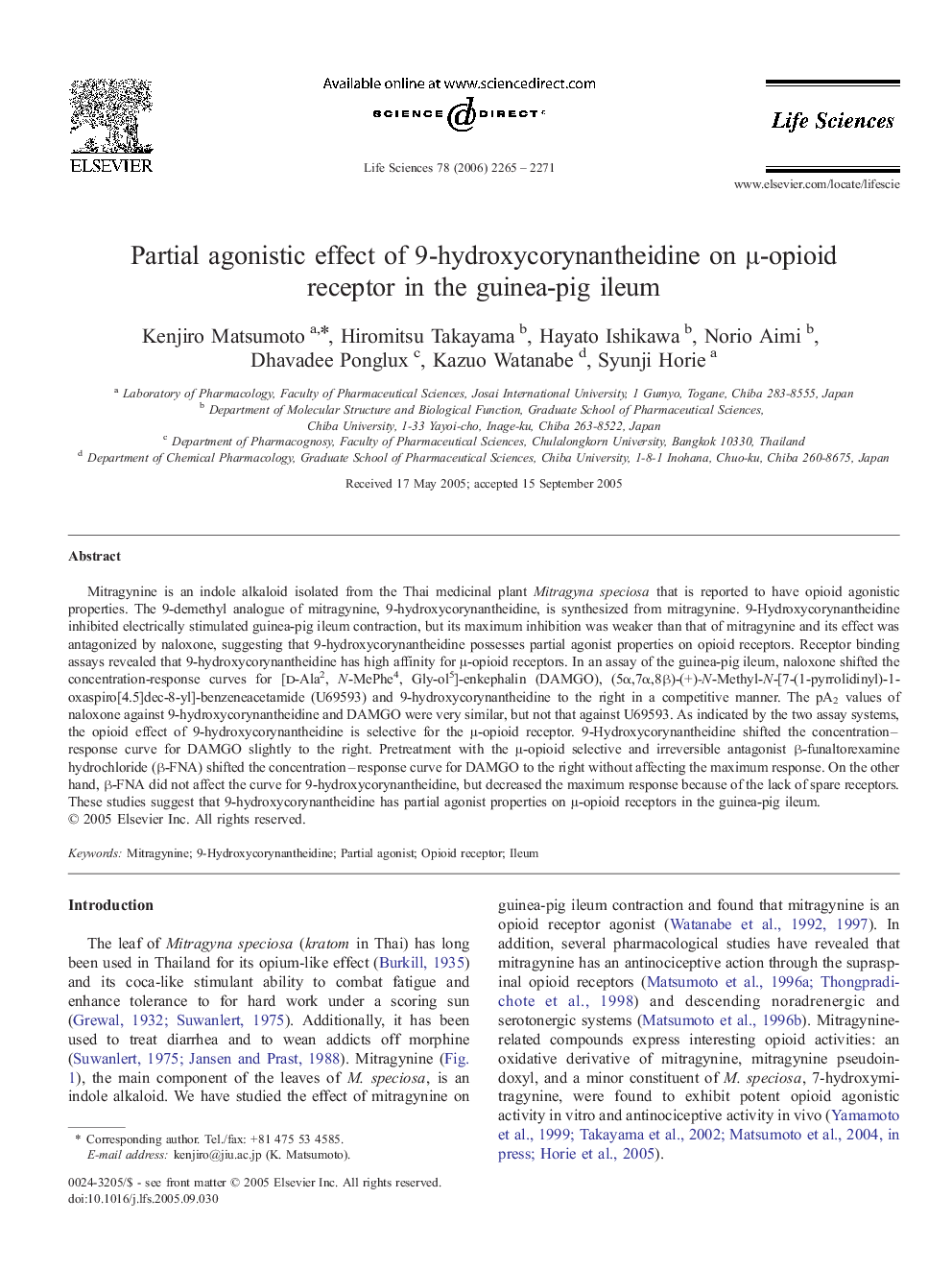| Article ID | Journal | Published Year | Pages | File Type |
|---|---|---|---|---|
| 2554462 | Life Sciences | 2006 | 7 Pages |
Mitragynine is an indole alkaloid isolated from the Thai medicinal plant Mitragyna speciosa that is reported to have opioid agonistic properties. The 9-demethyl analogue of mitragynine, 9-hydroxycorynantheidine, is synthesized from mitragynine. 9-Hydroxycorynantheidine inhibited electrically stimulated guinea-pig ileum contraction, but its maximum inhibition was weaker than that of mitragynine and its effect was antagonized by naloxone, suggesting that 9-hydroxycorynantheidine possesses partial agonist properties on opioid receptors. Receptor binding assays revealed that 9-hydroxycorynantheidine has high affinity for μ-opioid receptors. In an assay of the guinea-pig ileum, naloxone shifted the concentration-response curves for [d-Ala2, N-MePhe4, Gly-ol5]-enkephalin (DAMGO), (5α,7α,8β)-(+)-N-Methyl-N-[7-(1-pyrrolidinyl)-1-oxaspiro[4.5]dec-8-yl]-benzeneacetamide (U69593) and 9-hydroxycorynantheidine to the right in a competitive manner. The pA2 values of naloxone against 9-hydroxycorynantheidine and DAMGO were very similar, but not that against U69593. As indicated by the two assay systems, the opioid effect of 9-hydroxycorynantheidine is selective for the μ-opioid receptor. 9-Hydroxycorynantheidine shifted the concentration–response curve for DAMGO slightly to the right. Pretreatment with the μ-opioid selective and irreversible antagonist β-funaltorexamine hydrochloride (β-FNA) shifted the concentration–response curve for DAMGO to the right without affecting the maximum response. On the other hand, β-FNA did not affect the curve for 9-hydroxycorynantheidine, but decreased the maximum response because of the lack of spare receptors. These studies suggest that 9-hydroxycorynantheidine has partial agonist properties on μ-opioid receptors in the guinea-pig ileum.
